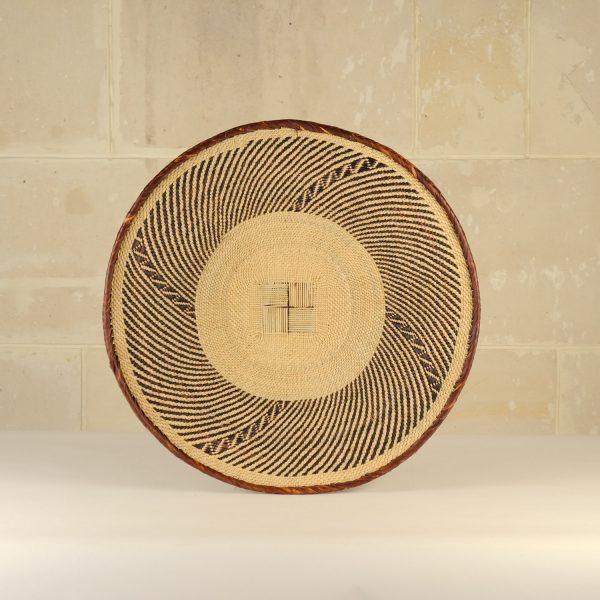Weaving has formed an integral part of African culture for thousands of years. From baskets and bags to fishing nets and furniture, the art of weaving has transformed communities, and these coveted skills are passed down from generation to generation.
Time-consuming and complex, each woven item has a story to tell, of long-standing African traditions -a timeless skill traditionally perfected by women. Using available local resources such as reeds, grass, raffia or palm fibres, African tribes have been developing this art form with styles, patterns, and shapes unique to each community’s location, culture, and needs.
African tribes typically use four different weaving techniques, coiling, plaiting, twining, or checkerboard. Before the actual weaving can commence, plant fibres are cleaned, stripped, and sometimes dyed before being woven into their specific shapes and patterns. Basket and textile weaving techniques have evolved from an integral and practical part of the community to a highly expressive form of contemporary art.
Binga, a timeless and complex skill
The BaTonga tribe of Zimbabwe and Southern Zambia are famous for their basket weaving skills as well as their geometric designs. These baskets are made entirely by hand by the women of these tribes.
The primary material used is ilala palm or mapokwe in Tonga — a tree that’s ubiquitous in Tonga. The women make the leaves pliable for weaving by boiling them. Tonga women only use natural dyes extracted from the roots and barks of trees to darken the leaves. Once the leaves are soft and dyed, they will be coiled in intricate patterns to make the basket sturdy. As for the base, an ilala palm is woven into a characteristic square to begin and then radiates outwards to create dramatic patterns, traditionally in the shape of a spider web or lightning. Next, the palm fibres are dyed with tree bark, and the baskets are finished with a distinctive herringbone pattern rim.
On the pictures above we can observe Tonga women producer group woven together – these women take pride in the preservation of traditions, skills and values that have been passed down through generations and today are being shared with the rest of the world.
Each basket will have you in awe of the women who make them.
Artkwaba
Each basket is treated with equal care, creativity and design with its unique patterns. The baskets are made out of Ilala palm leaves, each one hand-picked and specially selected. These winnowing baskets are used to separate grain from the chaff, or other debris from the stored grain. In an area prone to drought and poverty, Tonga women are the entrepreneurs of their villages, bringing much-needed additional income to their families.
Each basket takes about 2 weeks to make from start to finish — depending on how complex the design is. The designs have also evolved throughout the years. To adapt to the taste of the modern consumer, the designs have become more elaborate and varied. The amount of effort Tonga women put in each piece is definitely commendable, especially when it comes to making the complex patterns symmetrical. To do this, they carefully calculate the complex pattern prior to and during the weaving process.
In addition, Tonga baskets were traditionally made to carry agricultural produce and to serve food. To this very day, you can see women working the fields, balancing Tonga baskets on their heads. They are still used out in the farmlands of Zambia and other parts of Africa, but steadily they have become much more desired in the decor world.
Of note, these baskets have square bottoms so they can easily stand alone. Each basket is a different size, symmetry and pattern. They come in natural colors, creams, browns, earthy reds and greens, and only natural dyes are used. The baskets all have an individual construction and once complete, transform from a beautiful and natural raw product to a beautiful, natural and sturdy artistic statement.
Some inspirations – contemporary hack
As we can see, they’re a beautiful way to bring a little African design into your traditional or contemporary home. Many people create Tonga basket displays on their walls, while others use them in the kitchen or as creative decor accessories.
No matter what you are using your Tonga basket (or baskets) for, they look beautiful in any home. Our Tonga baskets are of top quality, 100% unique with extraordinary texture and symmetry. It’s sometimes hard to believe they are woven by hand. Display them together, individually, or create a collage statement. Each Tonga basket will have you in awe of the women who make them.
-
 Panier binga19,99 € – 49,99 €
Panier binga19,99 € – 49,99 €







1 reply on “Binga baskets : The art of african weaving”